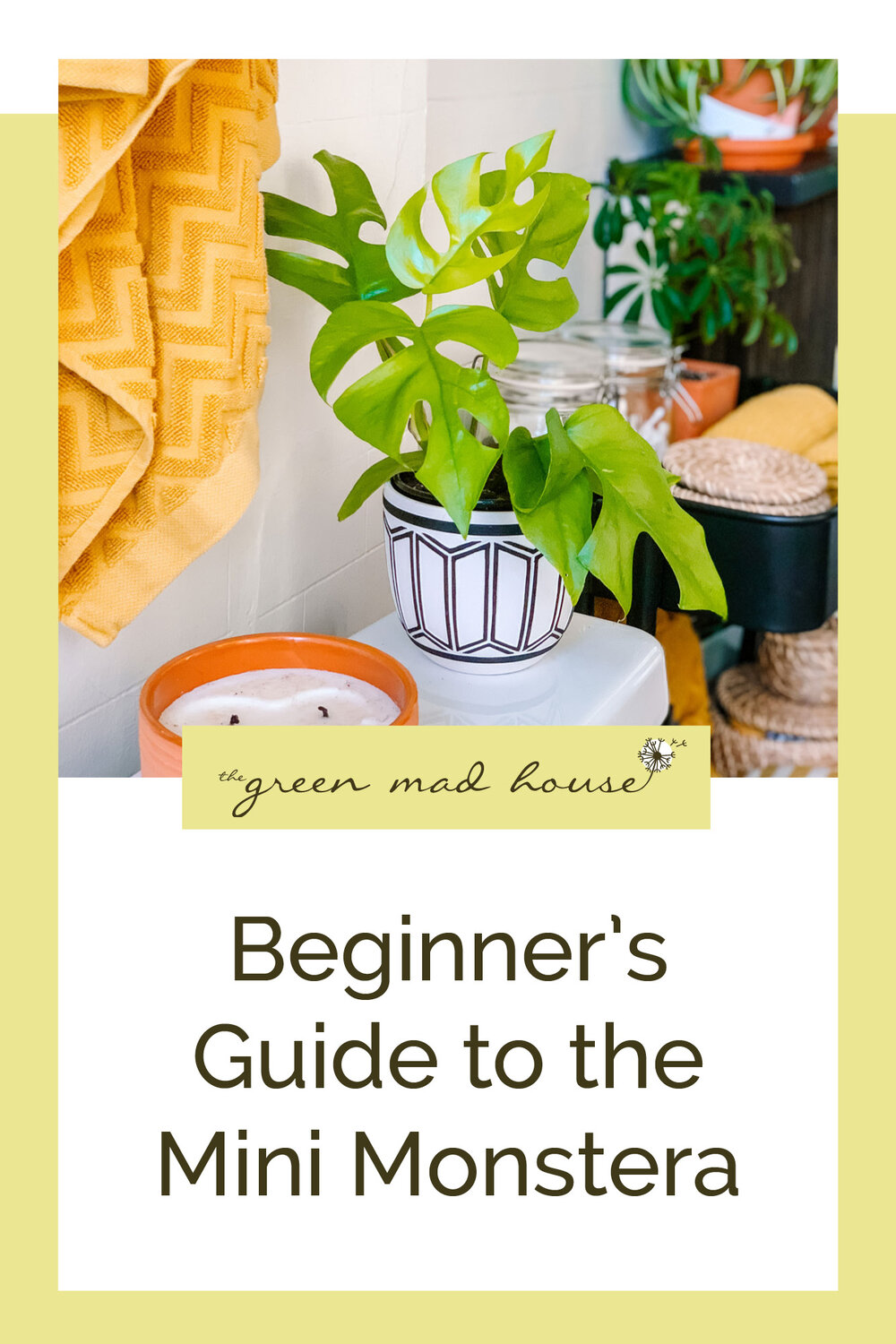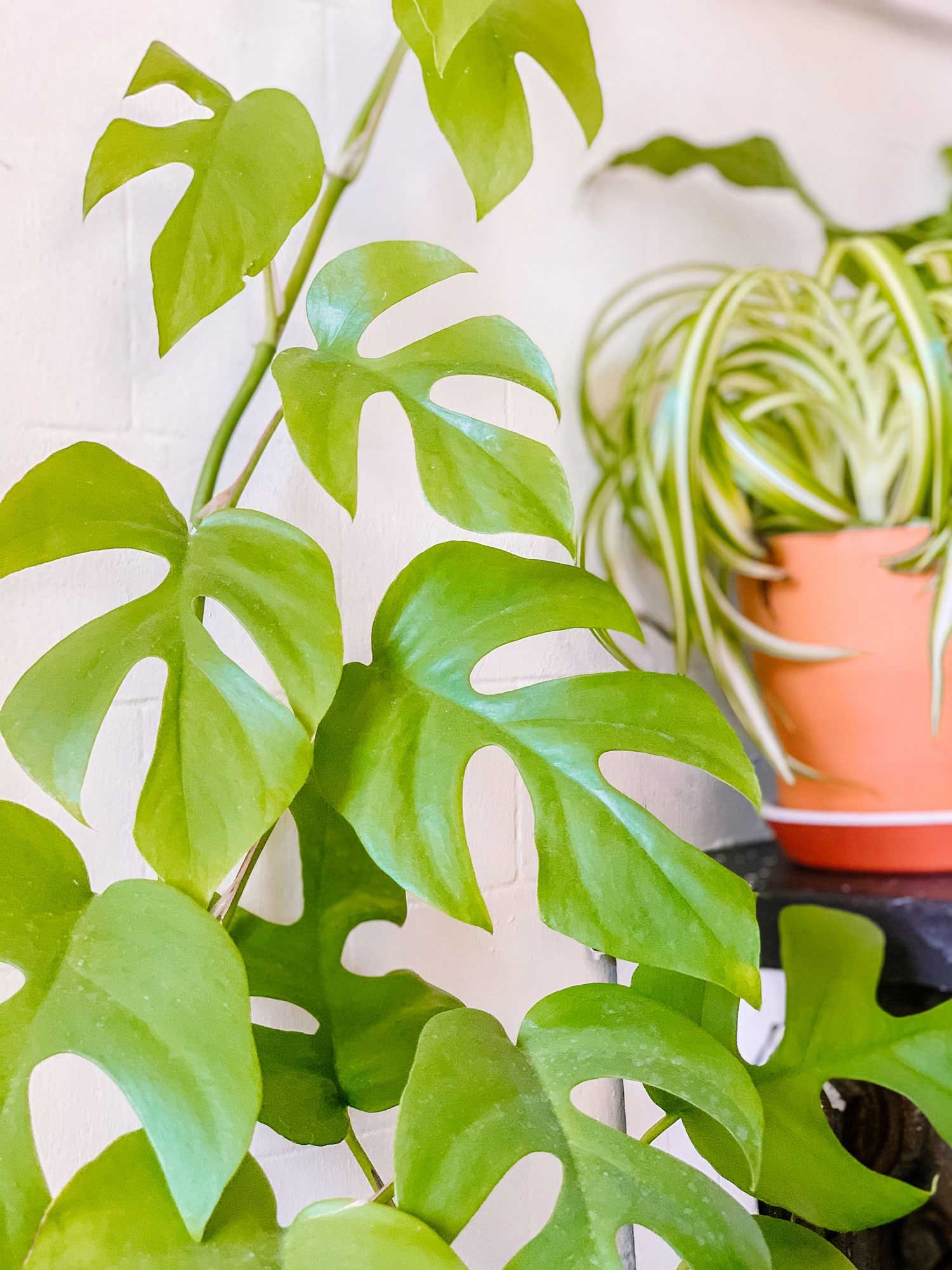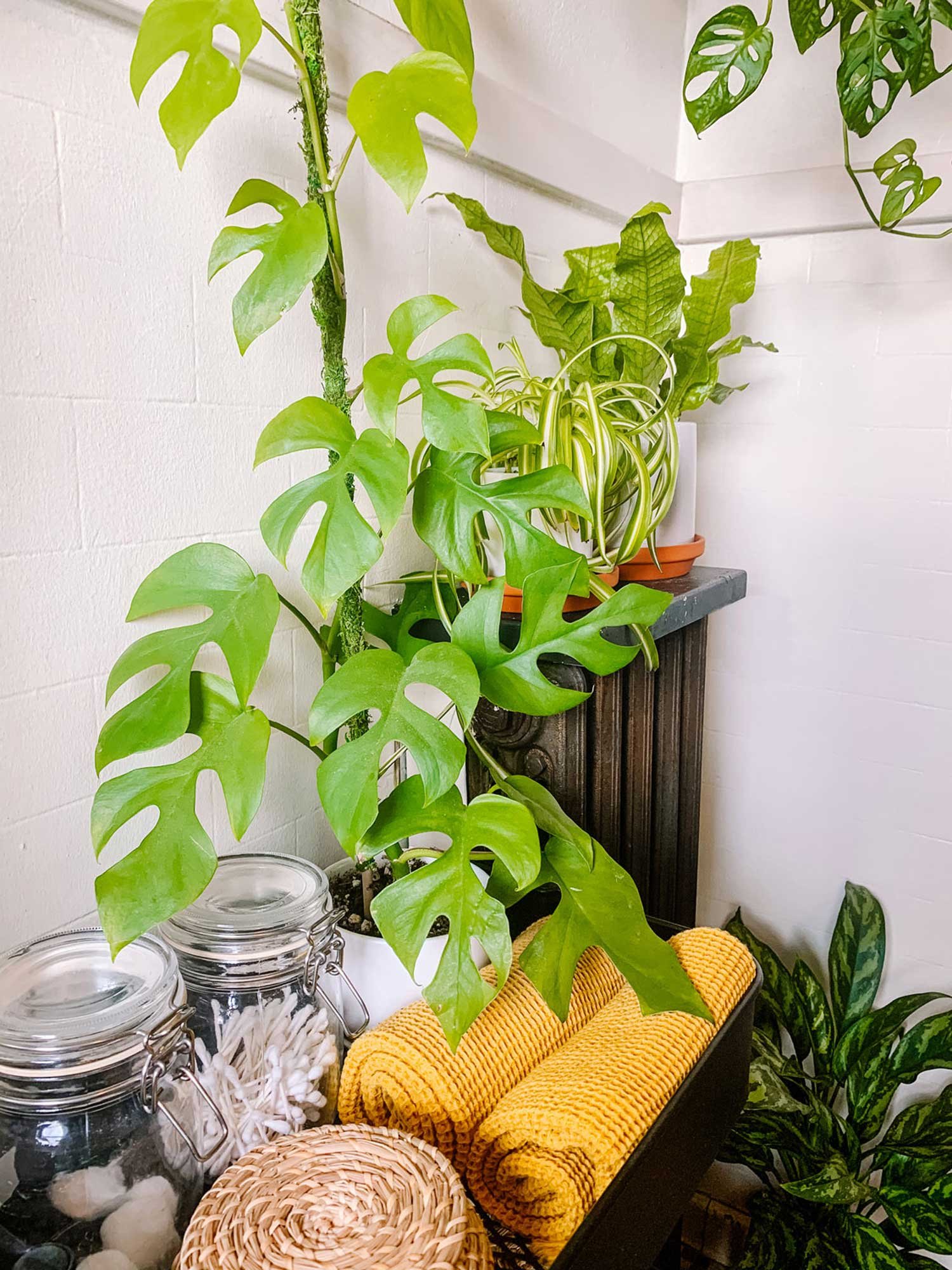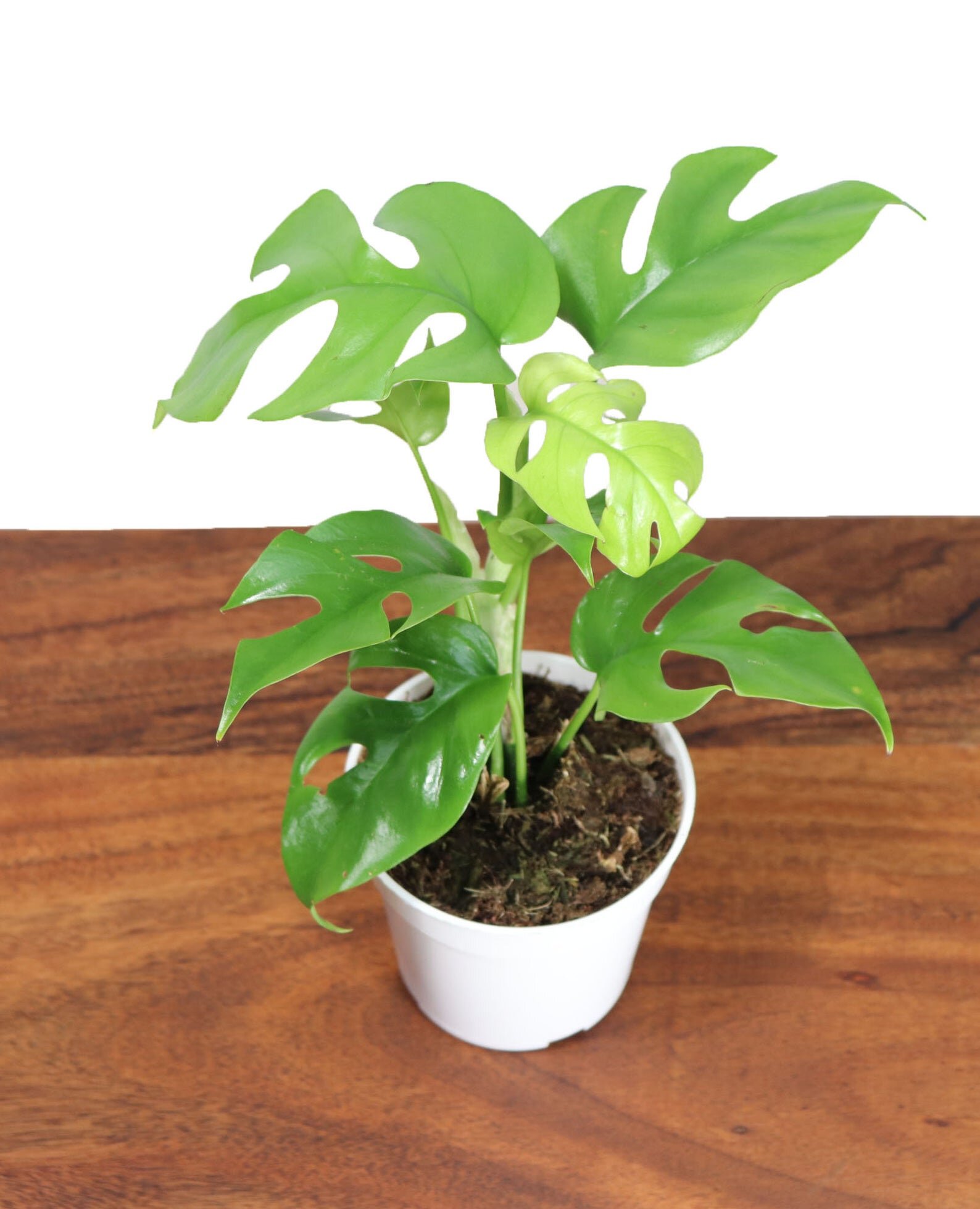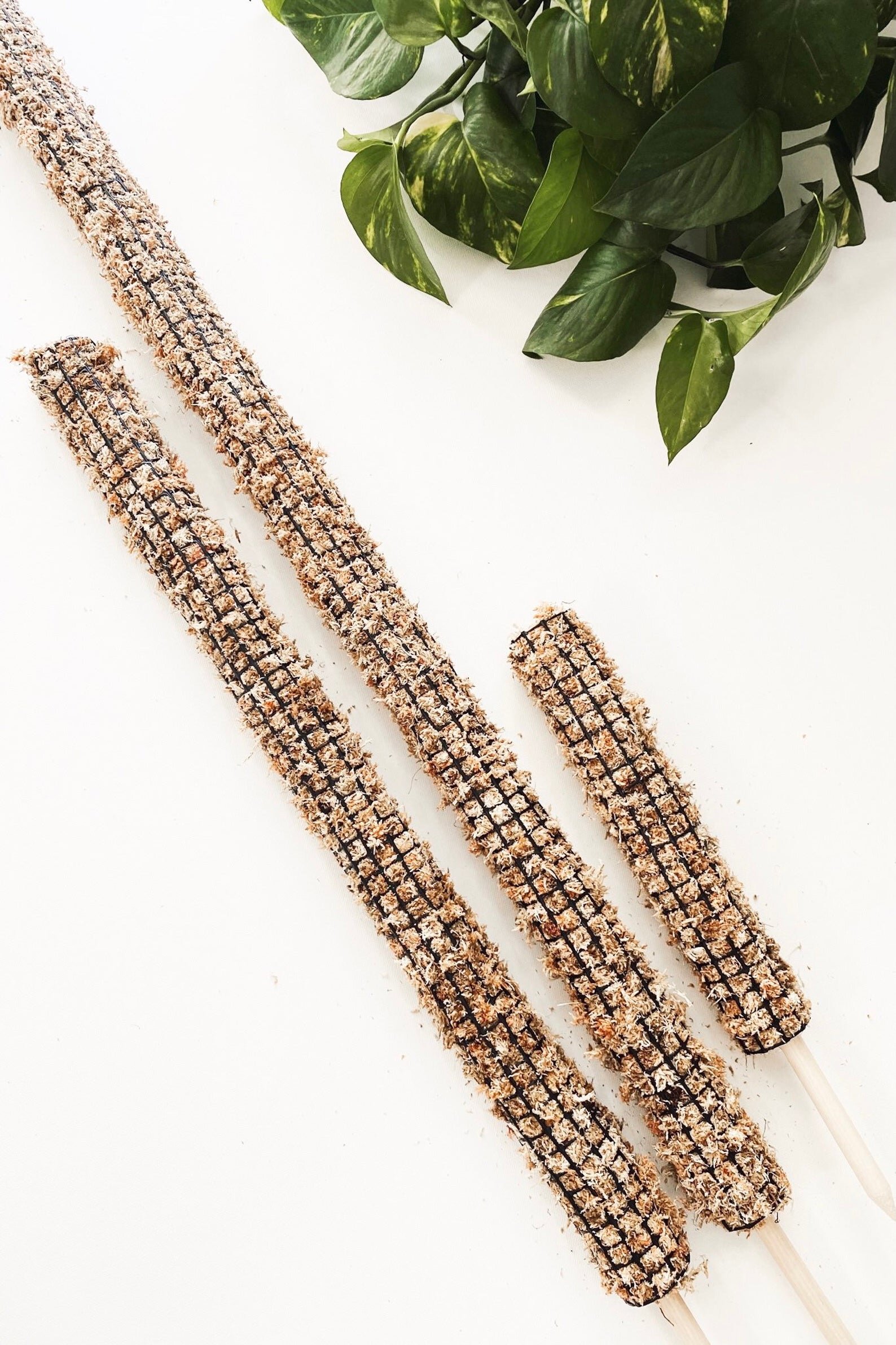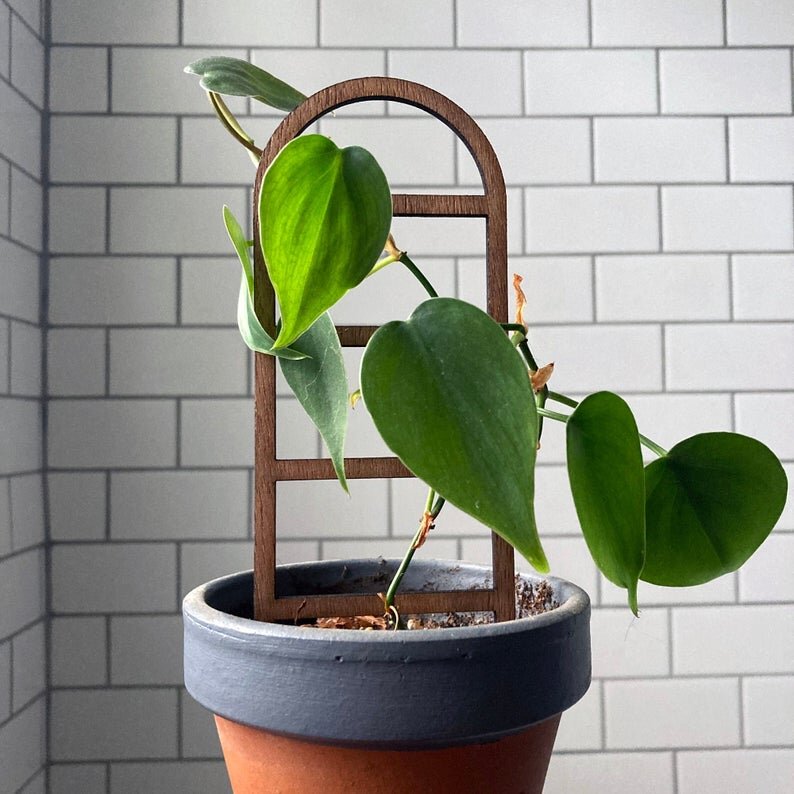Care Guide for the Mini Monstera
As an Amazon and Etsy Associate I earn from qualifying purchases.
Mini Monstera with our DIY Moss Pole
About the Mini Monstera
Rhaphidophora Tetrasperma, commonly known as the Mini Monstera or Philodendron Ginny, is a tropical vine with aerial roots that is easy to care for and will reward you with fast growth. Named for looking just like a Monstera Deliciosa or Split Leaf Philodendron at a miniature scale (these leaves won’t get bigger than 12”), they share many of the same traits and care requirements. Aim for a place with higher humidity, loose and rich soil, medium to bright indirect light or direct morning sun, and a structural support. Although this is a vine, if you try to encourage this plant to trail, it won’t be as strong and may not grow as well, instead these plants are ideal for a trellis or moss pole as their aerial roots will seek out stabilization.
I bought my Rhaphidophora Tetrasperma (say that ten times fast) at the end of spring 2020 in a small 4” pot with a total of 4 leaves. In less than a year she has grown a couple more feet (!!!), although her growth did slow down in the deep of winter, and it has come time that she needs a moss pole. I have been putting this off for the last month but signs of spring are starting to show and I know she is about to kick off growth again, so I am doing a crossover DIY post with…. How to Make a Moss Pole. Check it out!
How to Care for your Mini Monstera
I know we can all stress when we get a plant that is less common or one that we are particularly excited about but I am here to tell you this one is super easy. Do you have a Monstera Deliciosa or a Monstera Adanasoii or basically any philodendron? Well the care is pretty much the same.
SOIL: Rhaphidophora Tetrasperma are fine with a regular potting soil but I like to add peat moss (to make it richer) and perlite (to help aerate the soil). They want those nutrients but that can lead to a water logged soil so perlite or charcoal help prevent this. Secondarily, an orchid potting mix can also do the trick. At the end of the day make sure you have drainage in that pot!
LIGHT: The Mini Monstera is pretty flexible with placement in your home. If you want to go the direct sun route, make sure it is morning sun as afternoon sun is too hot and bright and can burn your leaves, Otherwise, place it farther back from your brighter windows. Mine gets what I would consider to be medium indirect light and seems perfectly happy with it. If it is getting too little light than the leaves with be smaller, grow slower, and may not develop splits.
HUMIDITY: Now this is the part I struggle with the most, keeping moisture in the air. So much of this depends on where you live, the type of heating and cooling you have, and how your old your home is, but the Mini Monstera comes from Malaysia and Southern Thailand so it wants that humditiy. If you are like me and you need to supplement your humidity, you can purchase a humidifier (this is mine), place your Mini Monsteras in your bathroom (hot shower excuse!), and keep them on a tray of pebbles filled with water.
WATER: Mini Monsteras like to be kept pretty moist but do need some respite. This means when I walk by my plant I just stick my finger in the soil and assess. If the soil is dry then I water till it runs out the bottom. Of all my plants, she is one that I check the soil the most because she guzzles water. In the summer I probably water twice a week and in the winter its more like every 7-10 days. At the end of the day, when in doubt underwater because we don’t ever want root rot!
FERTILIZER: Although we have good intentions when it comes to fertilizing, Rhaphidophora are not always thankful. They are highly susceptible to fertilizer burn. Use a high quality fertilizer that is greatly diluted during the growing months. If you are worried about this than just avoid it, as long as you have that nutrient rich soil, she will be fine.
SUPPORT: I know we touched on this earlier, but these plants naturally climb trees in the wild. They seek out opportunities to climb and prefer a moss pole (check out my DIY here). Moss poles replicate their natural environment and you can mist the moss to encourage the aerial roots to wrap on. Trellises do the job too and are much cute than a moss pole.
Common Questions
PROPAGATION: Mini Monstera’s are really easy to propagate. You just need to make sure you are including a node on any cutting you make. It is very similar to the guide I wrote on propagating your pothos. Place your cutting in a glass of water, making sure at least one node is submerged, this is where the roots will come out of. Roots will start to appear over the following weeks and after they reach a length of a couple inches you can plant it in some fresh soil. Keep the soil moist and the humidity high those first few weeks as it adapts.
CONTAINER: These plants can dry out very fast so I do not recommend terracotta, hypertufa, concrete or any form of unglazed clay. If you do not have an appropriate pot, then just leave it in its plastic nursery pot and set it within another pot. Glazed ceramic is the best as it will help the soil retain water. Choosing a pot is an art form, check out my guide to planter types.
YELLOWING: This is an easy one to diagnose. Mini Monstera’s will yellow when exposed to too much sun or when they are under watered.
PESTS & DISEASES: Rhaphidophora Tetrasperma are prone to spider mites. This is very easy to treat though with neem oil.
PETS: Mini Monstera’s contain calcium oxalate crystals which are highly toxic to pets. That being said, my cats have never looked twice at my mini monstera. It is definitely not the type of plant they munch on.
So are you convinced that you need this IT plant? I can’t recommend it enough. Mine has grown so much over the last year to the point she now has a moss pole to climb and I am so proud of her. Its leaves are some of the prettiest in my collection and it really is one of my favorite plants. Tag me on Instagram with your Mini Monstera babies @thegreenmadhouse and let me know if you have any questions below.

